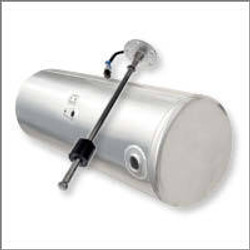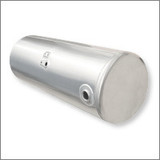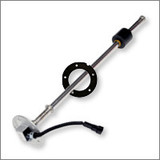Kenworth T700 Fuel Tanks: Durable and Reliable Fuel Solutions for Your Truck
When it comes to powering your Kenworth T700 truck, you need a fuel system that is both durable and reliable. The Kenworth T700 Fuel Tanks product lineup offers a comprehensive selection of high-quality fuel tanks and related accessories to meet your specific needs. From standard diesel fuel tanks to custom tank configurations, this product lineup has everything you need to keep your T700 running smoothly.
Designed to withstand the rigors of the road, the fuel tanks in this product lineup are built to last. With features like corrosion-resistant materials, secure mounting systems, and precise fuel level monitoring, you can trust that your truck's fuel supply will be well-protected and easily accessible. Whether you're hauling heavy loads or tackling long-distance hauls, these Kenworth T700 fuel tanks are engineered to provide the performance and efficiency you demand.
In addition to the fuel tanks themselves, this product lineup also offers a wide range of fuel tank accessories, such as caps, brackets, senders, and covers. These components ensure your fuel system is complete, secure, and easy to maintain, giving you peace of mind on the road.
Upgrade your Kenworth T700 with the high-quality fuel tank solutions found in this product lineup. Maximize your truck's performance, efficiency, and reliability with the durable and reliable fuel tanks built specifically for the T700 model.
Frequently Asked Questions About Kenworth T700 Fuel Tanks
What size fuel tanks are available for the Kenworth T700, and how do I determine which capacity I need?
Kenworth T700 fuel tanks typically range from 100 to 150 gallons per tank, with dual tank setups offering 200 to 300 gallons total capacity. To determine the right size, consider your typical route distances, fuel stop availability, and weight restrictions. Long-haul drivers often prefer 150-gallon tanks for extended range, while regional drivers may opt for 100-120 gallon tanks to save weight. Check your truck's spec sheet or door jamb sticker for original tank specifications to ensure proper fitment.
Will aftermarket fuel tanks fit my specific T700 model year, and what mounting modifications are required?
Most aftermarket fuel tanks are designed to fit T700 models from 2008-2019, but mounting brackets and strap configurations can vary between model years. Pre-2011 models may require different mounting hardware than 2011+ models due to frame rail changes. Always verify your truck's exact model year and frame rail spacing before ordering. Installation typically requires no drilling if you're replacing OEM tanks, but custom installations may need bracket adjustments or additional mounting hardware.
What's the difference between aluminum and steel fuel tanks, and which material lasts longer?
Aluminum tanks are approximately 50% lighter than steel tanks and resist corrosion better, making them ideal for weight-sensitive applications and coastal regions. Steel tanks are more impact-resistant and typically cost 20-30% less but require regular inspection for rust. With proper maintenance, aluminum tanks can last 15-20 years, while steel tanks typically last 10-15 years. Most T700 owners prefer aluminum for the weight savings and longevity, especially when running dual tank setups.
Can I install a larger fuel tank without relocating other components, and what clearance issues should I watch for?
Upgrading to larger tanks often requires checking clearance for exhaust systems, DEF tanks, and battery boxes. Tanks over 120 gallons may interfere with factory exhaust routing on 2010+ emissions-equipped T700s. Measure the space between your frame rails and existing components before ordering. Step tanks or D-shaped tanks can provide additional capacity while maintaining ground clearance. Some installations may require relocating the DEF tank or modifying exhaust hangers.
What fuel tank accessories and sending units are compatible, and how do I ensure accurate fuel gauge readings?
Most T700 fuel tanks use standard SAE 5-bolt sending units with either mechanical float or electronic sensors. When replacing tanks, match your original sending unit type - mechanical gauges require mechanical senders, while electronic dashboards need electronic senders with the correct ohm range (typically 33-240 ohms). Aftermarket tanks should include mounting provisions for factory-style sending units, fuel pickup tubes, and return lines. Always transfer your original sending unit if it's functioning properly to maintain accurate gauge readings.

 Kenworth T700 Diesel Fuel Tanks
Kenworth T700 Diesel Fuel Tanks
 Kenworth T700 Fuel Tank Acc.
Kenworth T700 Fuel Tank Acc.
 Kenworth T700 Fuel Tank Brackets & Straps
Kenworth T700 Fuel Tank Brackets & Straps
 Kenworth T700 Fuel Tank Caps
Kenworth T700 Fuel Tank Caps
 Kenworth T700 Fuel Tank Covers & Bras
Kenworth T700 Fuel Tank Covers & Bras
 Kenworth T700 Fuel Tank Senders
Kenworth T700 Fuel Tank Senders



